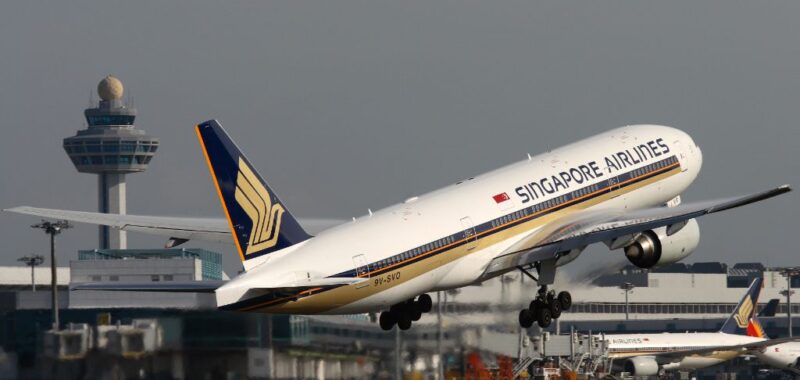Singapore Airlines’ emissions are rising as the carrier expands operations, but the company says it remains on track to hit its 2050 climate goals.
In its latest sustainability report, Singapore Airlines Group reported that total emissions rose more than 13% over the past financial year, from 18.8 million tonnes of CO₂e to 21.4 million tonnes. The airline, which has orders for over 70 new planes, pointed to strong passenger demand and ongoing airspace restrictions, which have forced longer flight routes, as key reasons behind the increase.
The company’s CEO, Goh Choon Phong, said its investment in newer aircraft, which the industry says emits up 25% less carbon, will help in plans to reduce emissions to almost zero by 2050.
“Our long-term commitment to investing in and operating new-generation aircraft puts us in a strong position,” Goh said. “As of 31 March 2025, the average age of the Group’s operating fleet was seven years and eight months, well below the global average of 15 years.”
Rising Costs From Climate Rules and Compliance
At the same time, the carrier warned that complying with international climate regulations could come at a significant cost in the years ahead.
It estimated the global aviation carbon offsetting scheme, known as CORSIA, which most airlines are a part of, could cost the airline around $150 million by 2030.
CORSIA requires airlines to purchase credits if their emissions exceed 85% of their 2019 levels, with the goal of offsetting the climate impact of growing international air travel.
In its report, the airline flagged its scope 1 emissions, which are mainly made up of fuel, as the main driver of future compliance costs.
Singapore Airlines pointed to sustainable aviation fuel (SAF) as a long-term solution. SAF can reduce emissions by around 65% compared to traditional jet fuel, according to the sector. The airline called SAF “a critical lever for decarbonisation” and said it would continue to support its development and use.
Managing Climate Risks
The airline said that other climate-related risks, such as extreme weather and infrastructure threats, currently have a limited financial impact.
However, it estimated that direct costs from these risks could reach up to around $35 million by 2030.
As part of its preparations, Singapore Airlines said it has invested in flood prevention measures at Singapore Changi Airport, including flood barriers and new drain sensors.
Skift contacted Singapore Airlines for additional comment on its climate strategy and financial forecasts, but the company did not respond.
Skift’s in-depth reporting on climate issues is made possible through the financial support of Intrepid Travel. This backing allows Skift to bring you high-quality journalism on one of the most important topics facing our planet today. Intrepid is not involved in any decisions made by Skift’s editorial team.


